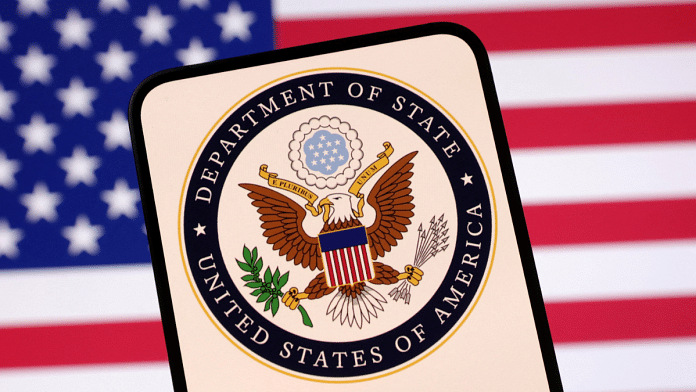Thank you dear subscribers, we are overwhelmed with your response.
Your Turn is a unique section from ThePrint featuring points of view from its subscribers. If you are a subscriber, have a point of view, please send it to us. If not, do subscribe here: https://theprint.in/subscribe/
For decades, the United States has been more than a country for young Indians — it has been a dream. A dream of world-class universities, cutting-edge industries, and a society that rewards merit, not privilege. For generations, the “American Dream” symbolized hope — a place where Indian students could turn ambition into achievement. But today, that dream is beginning to falter.
Recent events have cast a long shadow over the idea of America as a land of opportunity. Behind the glossy university brochures and Silicon Valley success stories lies a growing sense of fear. This month, 26-year-old Chandrashekar Pole from Hyderabad was shot dead while working a night shift at a Dallas gas station. Having just completed his Master’s degree, he was saving for the next chapter of his life. Instead, his story has joined a growing list of young Indians who never made it back home.
Over the past year, several Indian and Indian-origin students across states like Illinois, Ohio, and Indiana have died in violent or unexplained circumstances. While authorities describe these as “isolated incidents,” the Indian community no longer feels that way. When loss after loss strikes the same group, coincidence feels hollow.
Beyond the headlines, a quieter anxiety runs through Indian families abroad and at home. Videos of Indians being harassed on American streets circulate widely: women in Texas told to “go back to India,” a man in California insulted for being “a disgusting Hindu.” Social media is flooded with clips of brown faces mocked for accents, food, or clothes. Each small humiliation chips away at the belief that America is a place where everyone belongs.
Racism, of course, does not always arrive as violence. It can appear as the co-worker who mocks your English, the landlord who cancels your viewing after hearing your name, or the classmate who complains your lunch smells “too strong.” These microaggressions might seem trivial in isolation, but together they create an invisible weight — the daily reminder that one remains an outsider.
For many Indians in the U.S., this has translated into quiet fear. Students and workers alike avoid night shifts, hesitate to travel alone, or conceal religious symbols to stay unnoticed. Parents in India, once preoccupied with scholarship deadlines and flight bookings, now spend their nights forwarding safety advisories and crime alerts. Even those living safely admit they are more alert — scanning their surroundings, clutching bags tighter, keeping to themselves.
America’s changing political and social climate has only deepened the unease. Visa scrutiny is stricter, with some students facing delays or denials over online activity. Security policies, though justified in official language, reinforce the perception that Indian immigrants are perpetual guests — welcome, but never quite home.
The consequences could be long-term. Increasingly, Indian students and professionals are choosing Canada, Australia, or parts of Europe over the U.S., drawn by a greater sense of safety and belonging. Recruiters note a growing reluctance among Indian talent to settle in America. If this continues, the United States risks losing the very minds that have powered its technology and research sectors for decades.
But this is not just an economic issue — it is a moral one. Indian immigrants have helped shape modern America, from Silicon Valley to academia, yet they still face prejudice and exclusion. The “model minority” stereotype — portraying Indians as successful and compliant — has masked the racism they endure. Speaking out risks being seen as ungrateful. Remaining silent, however, comes at a cost: fear, isolation, and sometimes, tragedy.
Both governments must act. U.S. authorities should recognize the growing hostility against Indians and ensure transparent, urgent responses to hate crimes. Universities must prioritize the safety of international students through better security, transport, and mental health support. The Indian government, too, must strengthen consular outreach and engage more actively with U.S. institutions to safeguard its citizens abroad.
This is not merely about headlines or statistics — it is about human lives and fragile dreams. Every tragedy chips away at the trust that once made the American Dream so powerful. If America wishes to remain a beacon for global talent, it must ensure that dreamers are safe to dream. Today, for many Indians, the question is heartbreakingly simple: Is it still safe to think about achieving the America dream?


